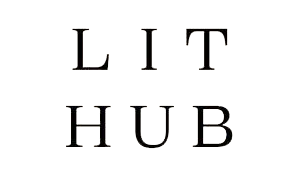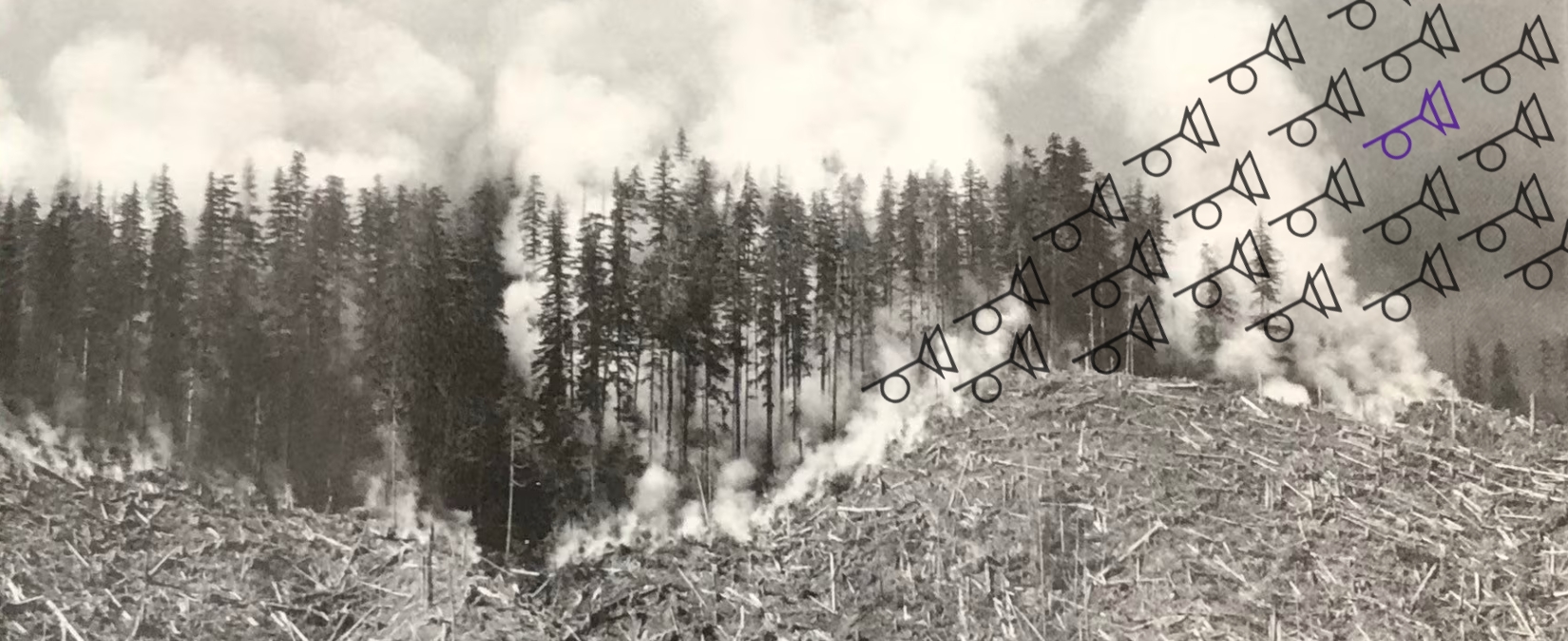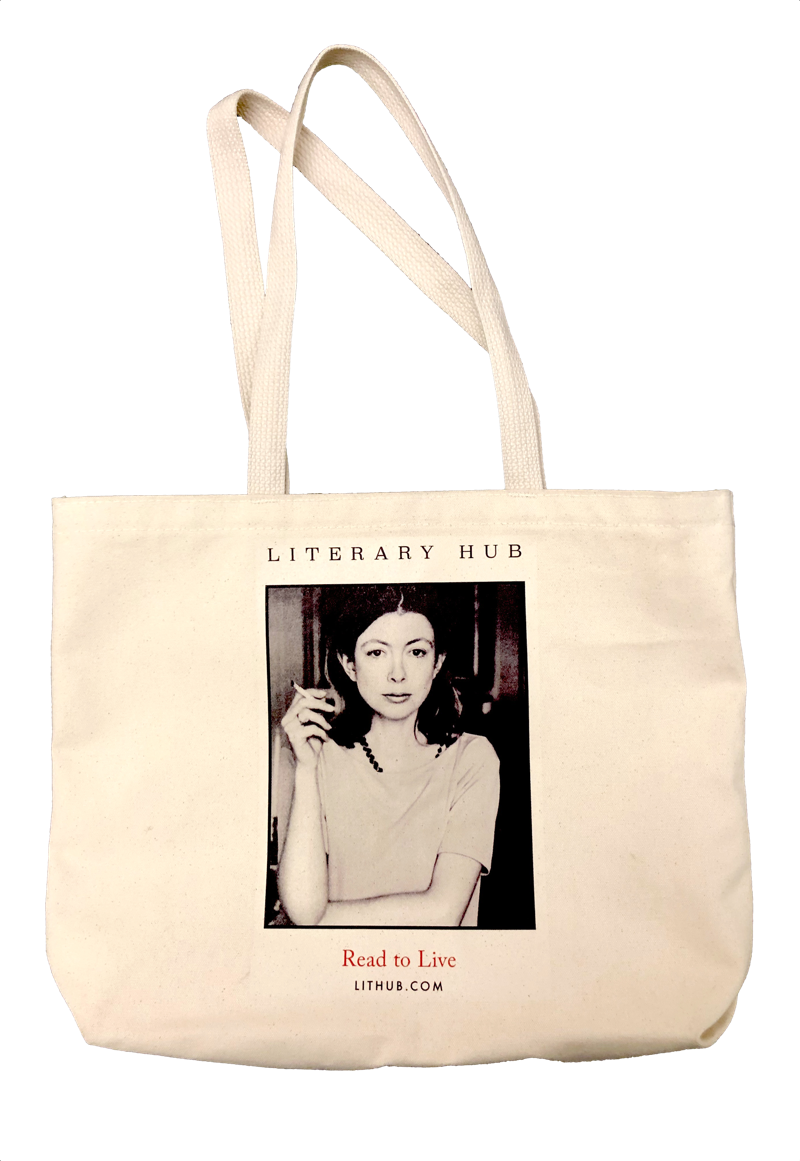2025 is shaping up to be the year of the Pynch. After 12 years of silence since Bleeding Edge, the 87-year-old author will publish Shadow Ticket on October 7th, 2025. The new novel concerns Milwaukee in the Great Depression—Hicks McTaggart, “a one-time strikebreaker turned private eye” searches for a missing Wisconsin cheese fortune heiress, who ends up entangled with paranormal, Nazi, Soviet, and British agents. “Surrounded by history he has no grasp on and can’t see his way around in or out of, the only bright side for Hicks is it’s the dawn of the Big Band Era and as it happens he’s a pretty good dancer.”
Meanwhile, One Battle After Another (based on 1990’s Vineland) will be Paul Thomas Anderson’s second adaptation of a Thomas Pynchon novel: 2014’s Inherent Vice starred Joaquin Phoenix as “Doc” Sportello, a counterculture detective who senses that the hippie world of Southern California is shifting off its axis. What tips Doc off is a missing ex-lover, something about a Golden Fang, vanishing Black communities, and the sudden presence of heroine in the hippie diet where previously there was only peace, pot, and LSD, as well as the sense that the world was composed of flimsy construction.
In Pynchon’s spiritually charged 60s, the rules and protocols of the world seemed eminently malleable; dreamed up by post-war stiffs in suits who were losing their grip. The hippies were counter-dreaming something new, and beginning to move in that direction all at the same time, singing the same song, and if were they left alone, what was in-control might slip away, like a woman held hostage by a sadist. A Eurydice captured by the underworld, and a roving Orpheus detective looking for her, are the foundational dynamics in most of Pynchon’s plots—but plot is secondary in the experience of reading Pynchon.
Inherent Vice and Vineland represent two of Pynchon’s “easy” novels, making them a natural adaptation for Anderson, who’s cast Leonardo DiCaprio to play Vineland’s Zoyd Wheeler, or a character like him. One Battle After Another will be set in the 1990s rather than the novel’s Reganomic-Orwellian era of 1984, but the machine-gun car-chase trailer promises the novel’s theme of American blockbuster violence will remain true.
What might be lost on moviegoers is the crestfallen murmurings that came with the 1990 publication of Vineland. In a letter to Jonathan Franzen, David Foster Wallace wrote, “I get the strong sense he’s spent twenty years smoking pot and watching TV.” Salman Rushdie was equally disappointed in his New York Times review: “We heard he was doing something about Lewis and Clark. Mason and Dixon? A Japanese science-fiction novel? There were rumors that he’d bang out a 900-page tome about the Civil War, and instead audiences got a zany book of washed-up hippies versus kookie government agents.”
Pynchon published three novels before the great 17-year silence that anticipated Vineland.What was not clear in 1990 now makes more sense—since 1970, Pynchon had been working on a door-stopper tome about the surveying of the Mason-Dixon line, which published in 1997. In 2006, he published an encyclopedic take-down of industrial capitalism—not the Civil War—in Against the Day. For Vulture in 2013, Boris Kachka wrote one of the most complete biographies of the man who refuses to appear in public, and notes that Pynchon’s Japanese science-fiction novel might refer to an abandoned project about an insurance adjuster hired to survey damage done to Tokyo by Godzilla. Born in 1937 near Oyster Bay, Long Island, as Kachka writes,
The name goes back to Pinco de Normandie, who came to England at the side of William the Conqueror, and carries on through Thomas Ruggles Pynchon, the author’s great-great-uncle, president of Trinity College and the first Pynchon to take issue with the family’s portrayal by another writer (Nathaniel Hawthorne, who wrote of the “Pyncheons” in The House of the Seven Gables). Thinkers, surveyors, and religious mavericks, the House of Pynchon had settled into middle-class respectability by the time this Thomas Ruggles Pynchon was born.
A portrait of Pynchon as a 16-year-old depicts a STEM prodigy entering the intensely competitive Engineering Physics Program at Cornell. Pynchon seemed able to soak up everything and anything, then dropped out and joined the Navy in 1955. He sees the world while making a minimal impression on his shipmates—as one Pynchon tracker put it, “It’s my sense that when you’d stop in Barcelona and the sailors would go to bars and whorehouses, he’d go to see a death cast of Chopin’s hands.”
After the Navy, Pynchon returned to Cornell and switched to English. In his first years after graduation, Thomas applied for a Ford Foundation grant to write librettos about Ray Bradbury’s science-fiction stories, but that didn’t pan out. What worked was the early short story titled “Low-Lands,” which concerned a depressed wino named Dennis Flange, a Vivaldi fan who’s whisked away to live in a garbage dump by a party animal named Pig Bodine.
Shot through “Low-Lands,” published in 1960, is a metanarrative around Heisenberg’s uncertainty principle applied to art, and the artist as a scavenger, establishing the manic blend of high and low culture that typifies Pynchon’s style—a continuation of the bar set by the high modernists (especially Joyce) who stretched literature as wide as possible, making the novel representative of everything in human experience, including time, sound, taste, the ineluctable modality of the visible, thought itself, and the entire spectrum of culture as experienced on one single day in Dublin. To achieve this encyclopedic scope, Joyce opened every door between the divine thought of Thomas Aquinas and crass Dublin newspaper ads. Pynchon sought to do the same for the American century.
Pynchon enjoyed the kind of early career every ambitious young writer dreams of: a difficult hurdle in any writer’s life is signing with an agent, but back in 1960, a Cornell professor handed Pynchon’s undergraduate student story to Candida Donadio, who secured $1,500 for it—$16,000 adjusted for 2025; an insane break. I don’t know what goes on in the Ivy League literature programs today, but the combination of money, agent representation, and publication put a 23-year-old Pynchon on the fast-track.
Pynchon is so associated with the 1960s that many mistake him as a hippie, but these early works are better understood as beat poet prose, and like the beats of his 1950s milieu, Pynchon used “Low-Lands” money to flee west.
*
Pynchon published three novels before the great 17-year silence that anticipated Vineland. During that silence, an important biographical detail wasn’t available to readers—while writing V, his first novel, our author worked for Boeing in Seattle, and wrote technical safety articles like “Togetherness,” which was published in the company’s magazine, Aerospace Safety.
Airlifting the IM-99A missile, like marriage, demands a certain amount of ‘togetherness’ between Air Force and contractor […] As this article goes to press, the safety record of Bomarc airlifts can be summed up in four words: so far, so good. You may recall, however, the optimist who jumped off the top of a New York office building. He was heard to yell the same thing as he passed the 20th floor: so far, so good.
The Boeing CIM-10 Bomarc program was a clandestine Cold War missile system that was, essentially, rigging up North America with nuclear explosives. The program was set up to hide supersonic ramjet surface-to-air missiles all across the continent, with rockets stored horizontally at SAM sites, attached to a launcher with a moveable roof. On the fateful day that inbound Soviet bombers filled the skies above America with godless communism, the horizontal Bomarc missiles would literally become erect, and fire vertically. Bomarc rockets had jets designed to propel a W40 nuclear warhead into high-flying USSR aircraft, which would detonate in the sky, showering the earth with radioactive debris, neutralizing quite a few enemies of American freedom.
As illustrated in Micheal S. Judge’s brilliant audio essay “Thomas Pynchon and the American Reconquista,” in the same year Pynchon was writing about Bomarc safety, a helium fuel tank exploded at the McGuire Air Force Bace in Ocean County, New Jersey. Initial reports claimed contamination only affected the sewer and land beneath the shelter, but the area was showered in weapons-grade plutonium. The warhead didn’t detonate, but according to the Trenton Times, “In June 1987, traces of a radioactive substance used in nuclear warheads (americium-241 related to plutonium) were found about one-half mile from the site.”
V won the Faulkner First Novel prize in 1964—a novel concerning a Dennis Flange-like protagonist named Benny Profane; an ex-Navy Orpheus who goes hunting for the sacred in the contaminated sewers beneath New York City, finding alligators and a deranged priest who preaches to the rats.
V contains a lengthy treatment of the Herero Genocide in Namibia, South West Africa—an often overlooked ethnic extermination, and torture campaign, committed by the German Empire before the Nazis. As Ariel Saramandi wrote in Electric Lit:
The story goes that Pynchon stumbled on the genocide while looking for a pamphlet on Malta. He then devoted himself to reading everything he could on it… It’s no small feat, considering that V. was published in 1961 and most of the history books on the genocide were written in the 2000s. The Herero massacre wasn’t even really talked about until mid-1990s.
As Saramandi points out, the Herero war crimes are written in a powerful, furious voice. They are witnessed by Kurt Mondaugen, who becomes a central character in Gravity’s Rainbow, connecting colonial violence to the fascism that erupts in the imperial core. Journalists wishing to interview Pynchon about V, and the Faulkner prize, sent him fleeing his home for a motel, skipping town to hide in Mexico City, establishing another generationally rare path in any author’s story—though he’s a known figure in his New York City neighborhood, Pynchon has never appeared in public.
Most encounter Pynchon through Lot 49—short enough to fit on a university literature syllabus and “explain the 60s” to students.In the tradition of encyclopedic literature, from The Anatomy of Melancholy to Melville’s Moby-Dick, following the high modernists in opening the full aperture of the novel to take in as much as physically possible, Pynchon produced Gravity’s Rainbow; a massive, carefully constructed sand mandala composed of everything in World War II. Because of his experiences with the Bomarc, and his place in American Empire, Pynchon’s magnum opus contains everything from Loony Tunes, to Nazis, to the technical specifications of a German V2 rocket—Pynchon’s Melvillian whale. All is equal in the eyes of the rocket, but many horny sadists prowl the earth wielding god-like technological might, eager to fuck and kill all living things.
A version of The Crying of Lot 49 was originally a part of the bigger Gravity’s Rainbow project, but Pynchon pulled Lot 49 out as a stand-alone novel and sold it for $10,000 in 1966—$98,000 today. Most encounter Pynchon through Lot 49—short enough to fit on a university literature syllabus and “explain the 60s” to students. In a famous passage, California housewife turned totality detective Oedipa Maas observes the way in which Californian suburban sprawl is, itself, like a computer.
The ordered swirl of houses and streets, from this high angle, sprang at her now with the same unexpected, astonishing clarity as the circuit card had. Though she knew even less about radios than about Southern Californians, there were to both outward patterns, a hieroglyphic sense of concealed meaning, of an intent to communicate. There’d seemed no limit to what the printed circuit could have told her (if she had tried to find out); so in her first minute of San Narciso, a revelation also trembled just past the threshold of her understanding.
Many were, and are, attracted to Pynchon because of the abnormal discloser in his books, especially in a pre-internet age. Lot 49’s unhinged Dr. Hilarius seeks to dose his California patients with LSD, and reveals that he is a client of Operation Paperclip—a US program to launder Nazis into the United States, giving them citizenship. Dr. Hilarius admits he is a former Buchenwald concentration camp intern, and the Zyklon B manufacturer I.G. Farben (now Bayer), which produced the poison of the Holocaust’s gas chambers, plays a prominent role in Gravity’s Rainbow. Werner von Braun embodies the central driver of V2 metaphor in Pynchon’s mandala—Von Braun was a Nazi rocket scientist before he became a stalwart NASA American, who now has his own bust in Huntsville Alabama.
The Bomarc missile program was connected by an early version of the internet called the Semi-Automatic Ground Environment (SAGE) system. This system used early computers and data networking to communicate about that mythical Soviet air attack, and without explicit knowledge, beyond the purview of consent, Pynchon knew that Americans of the 1960s were being enclosed in a vast, dangerous, inhuman, technological system. A vicious, spreading, computerized deity who is not the true God, but rather a gnostic demiurge.
If you had to point to one continuous theme in all of Pynchon’s work, it is a silver Christian fish bumper sticker turned right-side up to look like a rocket. Our science worship has usurped the God worship of previous centuries, but ultimately points to Old Testament outcomes: Apocalypse, holocaust, and the fascistic desire to dominate. The phallic sex-death drive of the 00000 V2 rocket—produced using concentration camp labor—ends the world of Gravity’s Rainbow, but also begins the nightmare with a horror; you will never hear that screaming which comes across the sky, because the impact of a supersonic rocket outpaces the noise of the explosion. A rocket fired into a crowded city— technology used for indiscriminate extermination of civilians. Characters in Gravity’s Rainbow traverse The Zone with instant death hovering overhead; a paranoia known to the civilians of Gaza. The October 7th release date for Shadow Ticket may not be a coincidence.
*
Pynchon’s Orphic characters are often detectives who are tuned to the right the spiritual right frequency, discovering clues and linkages of the system without ever beholding the entire totality. For Fredric Jameson, totality detection is fundamentally important because investigating the linkages of reality includes all sorts of stuff They don’t want us to think about (like the way our labor might be better organized, for example) . In Raymond Chandler: The Detections of Totality, Jameson points to detective characters in novels as unique kinds of fictional protagonists who track down, and uncover veiled relationships like yours and mine to the Boeing corporation, or the State of Israel, or the people of Gaza, who are only so many linkages away. Another big concept in Pynchon is maps, and cartography, and in a way, reading fiction creates an empathetic map. Exploring Pynchon’s novels, and cross-referencing his complex jokes, exercises empathetic cartography.
Originally titled Mindless Pleasures, Gravity’s Rainbow won the 1974 National Book award, which Pynchon sent the comic Irwin Corey to accept. The author put out a collection of early short stories in 1984 titled Slow Learner, but stayed vanished until 1990, when Vineland published. In the interim silence, a sizable amount of scholarly work was churned out.
It’s maybe no accident that Vineland begins with a washed-up hippie, Zoyd Wheeler, whose finances depend upon proving his insanity to society.Harold Bloom gushed over Pynchon, anthologizing and awarding him a seat at his table of eternity next to Joyce and Melville. The early scholarship reflects this academic enthusiasm, and when Vineland published, it was like feeding popcorn to a tank of starving sharks. They were expecting blue-ribbon chum—a Finnegans Wake about the Civil War; something that would out-scale Gravity’s Rainbow, and give scholars something to decode for decades.
It’s maybe no accident that Vineland begins with a washed-up hippie, Zoyd Wheeler, whose finances depend upon proving his insanity to society. Annually, Wheeler has to demonstrate his manic-zaniness by jumping out the window of a local business. He does this to the fanfare of the media, thus securing his government disability check.
Wallace thought the master had slipped, Rushdie was pissed, but Vineland is a lovely 300-page novel. It’s a funny one about the 1980s hippie diaspora, but when it published, critics couldn’t see that it would be part of a series of “accessible” stoner detective yarns.
Vineland is apt for our moment since the plot is set in motion by Reagan’s slashing of the federal government, unwittingly severing millions of connections, setting in motion events beyond anyone’s control, resurrecting the suppressed. The novel centers Wheeler as a “transfenistrating” father who begets the dialectical reversal of a hippie—Prairie Wheeler, a 1980s Northern California punk girl. Characters in Vineland are numbly transfixed by television, and violence permeates the culture of 1984. The trailer for One Battle After Another is action-packed and gun-heavy, bringing to mind a passage in the novel in which the narrator asks Weed Atman, the washed-up Jesus-like embodiment of the hippie, “Weed, how about picking up the gun? We know it’s supposed to be wrong, but we don’t know why.”
Once he would have proclaimed, “Because in this country nobody in power gives a shit about any human life but their own. This forces us to be humane—to attack what matters more than life to the regime and those it serves, their money and their property.” But these days he was saying, “It’s wrong because if you pick up a rifle, the Man picks up a machine gun, by the time you find some machine gun he’s all set up to shoot rockets, begin to see a pattern?”



